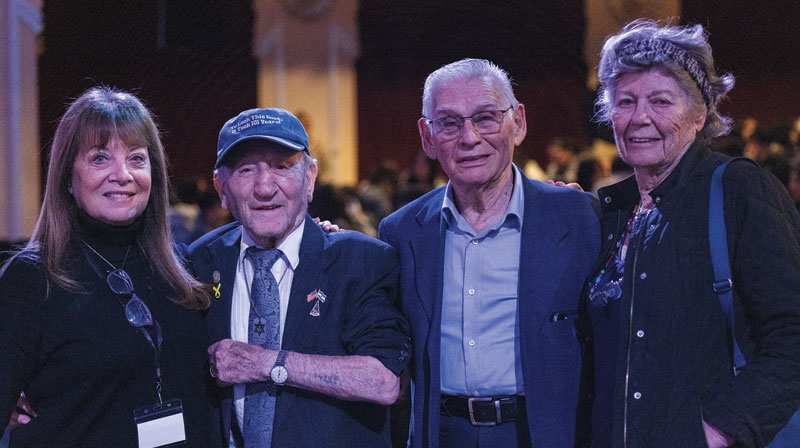One has to wonder when James Franco ever sleeps. Hollywood’s most educated thespian — perhaps best-known for his Oscar-nominated turn as the guy who cut off his own arm in Danny Boyle’s “127 Hours” – has famously juggled acting on soap operas and in blockbusters (think Rupert Wyatt’s upcoming “Rise of the Apes”) with doctoral studies in English and film at Yale, hosting the Academy Awards, creating art exhibitions, albums, a short story collection, conceptual and visual art. In Los Angeles on June 20, he’ll unveil his latest endeavor – directing and starring in an experimental biopic of the tortured, gay American poet Hart Crane – at the Los Angeles Film Festival, which runs from June 16-26. (UPDATE: Here’s an account of the festival event by the Journal’s Ryan Torok.)
A mustachioed Franco portrays Crane (1899-1932), who emerged on the scene with his Brooklyn-bridge epic, “The Bridge,” yet agonized over ever written word—even as he ferociously chased sailors, and was “incredibly comfortable with his sexuality,” Franco said by phone. But booze, brawls and depression took its toll on the poet, whose last work, “The Broken Tower,” chronicles his single heterosexual affair. Not long thereafter, when Hart was 32 – just a year younger than Franco – he jumped from a boat into the Gulf of Mexico and drowned.
Franco’s black-and-white film captures Hart’s brief, burning life in 12 “voyages,” or chapters, that merge verbal and visual imagery. It’s a stream-of-consciousness telling of Hart’s early years as the rebellious son of a wealthy Cleveland businessman; his sojourns through New York, Cuba and Paris; his torrid affair with a ship’s purser named Emil Opffer (Michael Shannon); his manic highs and suicidal lows and of course, his unapologetic love of men. The sex scenes, are, accordingly, explicit, with Franco-as-Hart ebulliently performing fellatio on what appears to be an impressive phallus, or ecstatic as he is topped during anal sex.
The idea for the film began as Franco was reading Paul Mariani’s biography of Crane, also titled “The Broken Tower,” on the set of the 2002 film, “Sonny” (Franco played a male prostitute who was pimped out by his mother). “I suppose it was that Crane had the quintessential tortured artist’s life,” Franco said of why he was drawn to the material. “He was trying to write in a way that was atypical for his time; he was not understood by most of his peers; he was struggling both with his financial circumstances and within himself to produce his work. He drank, he had lots of sex, he had one great, if short-lived, love. And so I thought, ‘That’s a story that lends itself to a film, easier than a story about someone like James Joyce, [who] wasn’t as readily dramatic or tragic. Although it could be done, it’s not quite the same kind of tortured life.”
Franco—who has appeared in the Spider-Man franchise and opposite Julia Roberts in “Eat Pray Love”—began “The Broken Tower” as his thesis project at New York University’s film school, and eventually decided to star in it himself. “He has made a film about Hart Cane, the visionary, but also about the hard life of Hart Crane, as a gay man, not just gay, but a wolf, really, going after sailors,” Mariani told The Chronicle of Higher Education. “And also his heavy drinking, despondency and proneness to suicide.”
The graphic gay sex scenes will no doubt be fodder for those who love to speculate as to Franco’s sexuality, given that he has also played the lover of congressman Harvey Milk in “Milk” and the Jewish beat poet Allen Ginsberg in “Howl.” He’ll release a vinyl album in July with his frequent collaborator, the drag queen Kalup Lindsay, and he once famously teased a reporter, “Maybe I’m just gay.”
Franco, who reportedly has had the same girlfriend, the actress Ahna O’Reilly, since 2006, appears to enjoy provocative intellectual fare as much as occasionally playing the provocateur.
Here are excerpts from the rest of our interview:
NPM: What was it like for Crane as a homosexual in the 1920s?
JF: He didn’t seem to have ever been troubled by being gay at a time when it must’ve been much more difficult to come out. But aside from not telling his parents, I think he was pretty open about it among his friends. So that didn’t seem to be a big issue, although he had that strange, unique-for-him, heterosexual relationship with Peggy Crowley, while he was in Mexico. But for me that didn’t feel like it was Crane renouncing the way he had lived before or that he had been struggling with being straight his whole life. Somehow he just came together with Peggy at a time when he was very emotionally needy. She was someone he felt really close to, and so it was more just coming together with a person; it wasn’t really about being troubled over being gay.
NPM: Why do you think Crane jumped from that boat to his death?
JF: In the film, I tried to show a lot of the different contributing factors that might have led to his suicide. Who really knows what the one trigger was, but there were a list of possibilities: His parents sounded like they had a really horrible marriage; he was a teenager when he tried to kill himself for the first time, and had a history of suicide attempts from a very young age. While I (again) don’t think he was troubled over being gay, his whole life he had trouble with drinking and he was probably an alcoholic. Then his father was a millionaire from selling chocolate, but he never really gave Hart any support. I think that Crane had been waiting his whole life, first to inherit money from his grandmother, and then from his father, and when that didn’t happen it was a big blow.
In addition, it was so difficult for him to write—I mean it just took years and years and YEARS—and his friends had turned on him with [negative reviews]. So there he was going back to a New York that had just fallen into the Depression; he had been trying to write some epic about the history of Mexico, and felt like he couldn’t write anymore. He had just written a poem that nobody cared about; he had no money and no inheritance; he was going to have to find a job in advertising again, which to an extremely sensitive person like him was just hell. And maybe he wouldn’t even get that kind of job because it was the Depression. So he was just going back to a place where he really had nothing to look forward to but misery.
NPM: Are there ways in which you identify with Crane, as an artist and a person?
JF: I suppose there are things that I both admire and, in some ways, think he maybe went too far with. He was an autodidact; he didn’t go to college, but he was always searching, and his letters are famous for engaging in these very pure and intense dialogues about his work. But he went too far in that he was very stubborn. He knew his work was difficult, and that he was going to turn off most readers. But he felt that if he had six good readers that was enough for him.
I am in a business where that’s harder to do, because movies cost more money, so you need more than six viewers to make the money back, or nobody is going to invest in your movies anymore. So I guess I admire his attitude, but when I’m dealing with something like a film, I try – depending on the subject – to walk a middle ground. The film, “The Broken Tower” is not going to be a blockbuster, but I’ve made it for not a ton of money – I made it for a very responsible amount of money, because I know what it is. But I’ve also tried to be true my subject and not water down or try to make it more entertaining just for entertaining’s sake.
NPM: Speaking of popular entertainment, you’re starring as a (human) scientist in the “Planet of the Apes” prequel, “Rise of the Planet of the Apes” (to hit theaters on Aug. 5). Do you view the original “Planet of the Apes” films as an allegory of race relations in America? And was the fact that these films transcend their science fiction genre part of the draw for you?
JF: Yes, it was. I wasn’t a “Planet of the Apes” aficionado but I went back and looked at the older movies. The setup for the original films was extremely well done because the apes were great figures to compare ourselves to. They look different but are as intelligent as humans, so the underlying premise is that these two cultures are not very different at all, yet they are fighting and each thinks it’s superior to the other.
Our film doesn’t really delve into race relations, because it’s an origin story, so the apes are only starting to grow into their intelligent versions. They’re in the transition stage, so the dynamic between the apes and the humans is very different than in any of the older films. I really don’t think there’s a strong racial bent in our film; it’s more about the dangers of experimentation and the relationship between human and animals than anything else.
NPM: The last time I spoke with you, you mentioned you’d like to have a bar mitzvah when you have the time. [Franco’s mother, Betsy Franco, is Jewish; his father is not.]
JF: Yes, I would like to. I would have appreciated having gone to Hebrew school and having that history, just because I love learning and I had so many friends who were going to Hebrew school and having bar mitzvahs and bat mitzvahs when I was growing up. At the time, I didn’t envy them, because none of them seemed to really enjoy it; it was a chore [laughs]. My parents were all over the map in terms of religion, but maybe it was good that nothing was imposed on me too strongly because there were so many different influences. But I am very interested in learning more about my Jewish heritage.
For information about “A Conversation With James Franco” at the Los Angeles Film Festival (a screening of “The Broken Tower” plus discussion afterwards), visit www.lafilmfest.com.





















 More news and opinions than at a Shabbat dinner, right in your inbox.
More news and opinions than at a Shabbat dinner, right in your inbox.